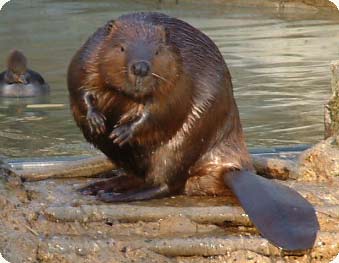 I’ve always found it strange that beavers are considered by some pests; besides being amazing animals with some amazing habits, they also have been proven to have a positive effect during the droughts which occure quite often these days. They can help mitigate the effects of drought, and because of that, their removal from wetlands to accommodate industrial, urban and agricultural demands should be avoided. No, really?
I’ve always found it strange that beavers are considered by some pests; besides being amazing animals with some amazing habits, they also have been proven to have a positive effect during the droughts which occure quite often these days. They can help mitigate the effects of drought, and because of that, their removal from wetlands to accommodate industrial, urban and agricultural demands should be avoided. No, really?
They finally managed to get to this conclusion.
“Removal of beaver should be considered an environmental disturbance on par with in-filling, peat mining and industrial water extraction,” said researcher Glynnis Hood, lead author on the study and an assistant professor of Environmental Sciences at the University of Alberta’s Augustana Campus in Camrose, Canada.
They analyzed a period of 54 years and found out that the presence of beavers brought a reserve of water of nine times bigger than it would have been without it. Climate models predict the incidence of drought in parts of North America will increase in frequency and length over the next 100 years. Beavers will definetly play a major role in the development of the situation, but in order for them to help us, we have to help them first!
“In times of drought they may be one of the most effective ways to mitigate wetland loss,” said Hood. “Some people believe climate is driving everything, but the presence of beaver has a dramatic effect on the availability of open water in an area. Beaver are helping to keep water in areas that would otherwise be dry.” Even during drought, where beaver were present, there was 60 per cent more open water than those same areas during previous drought periods when beaver were absent.
Was this helpful?



